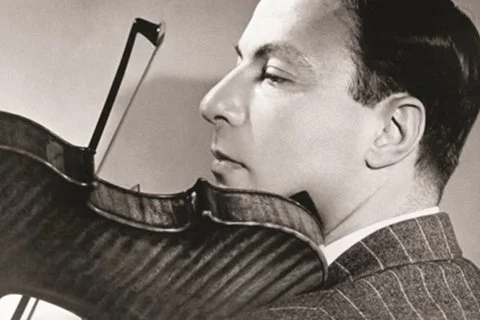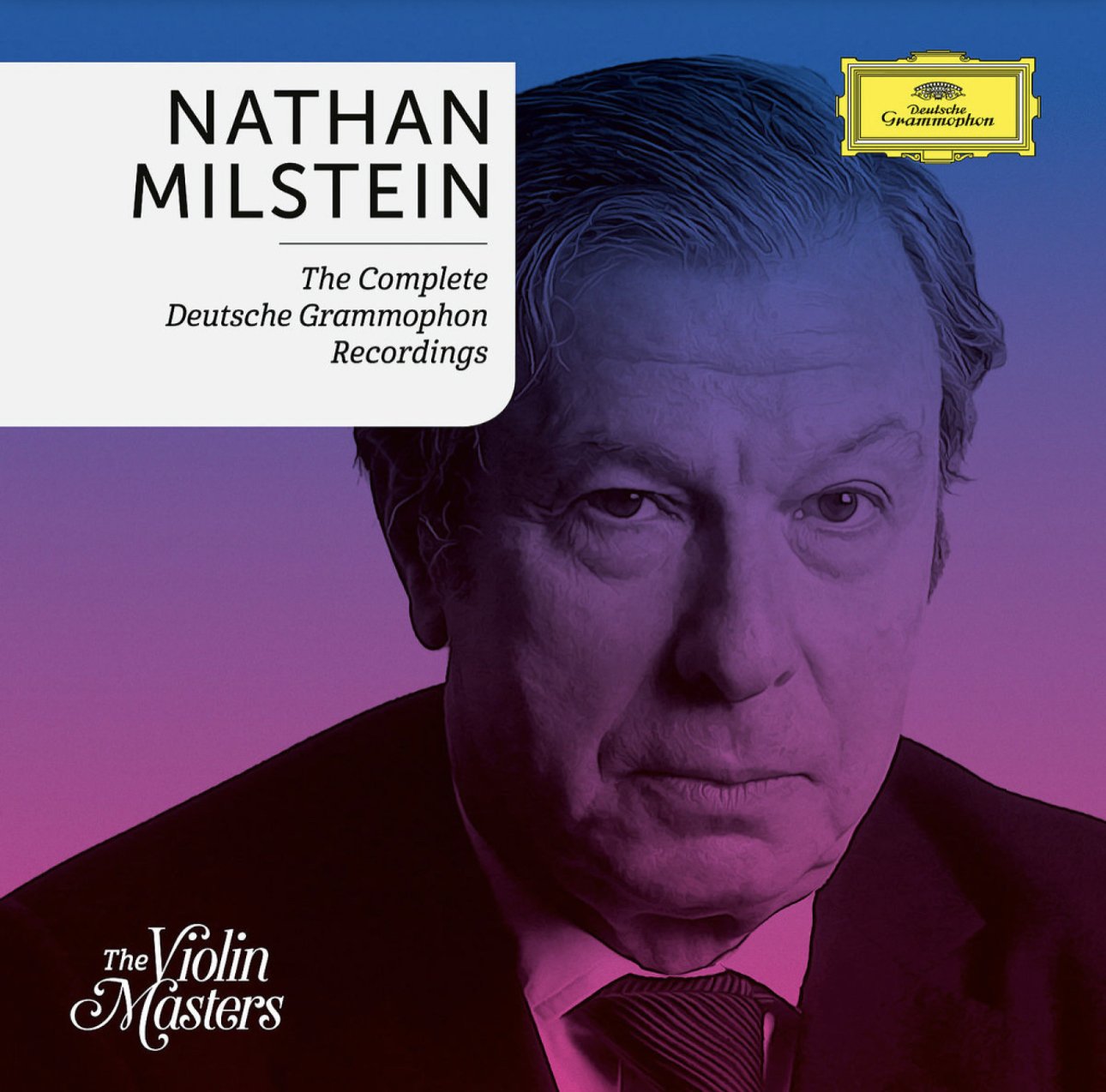Nathan Milstein—The ultimate violinist?
A few days ago a double CD landed on my doormat from an enterprising record label named Urania. They are celebrating their 25th anniversary with the release of five of the major 19th-century violin concertos played by the incomparable Nathan Milstein.
After reacquainting myself with these wonderful performances I was struck by the fact that no other record companies have made any attempt to mark Milstein’s passing just over 30 years ago (he died in December 1992 and this year is the 120th anniversary of his birth) and whilst his contemporaries Oistrakh and Heifetz are still mentioned with awe in the US, Milstein seems to have been sidelined despite being in my opinion and that of many orchestral players and colleagues, being the finest violinist of them all.
I’m not writing this to encourage a turf war against other players but merely to illustrate what amazing recordings Milstein did leave us and I think the comment that Milstein had the technique of Heifetz and the musicianship of Oistrakh sums up the situation for many of us who listen in wonder to his performances.
It's no coincidence that all three virtuosi were trained by the great Russian teacher and performer Leopold Auer. Milstein also came under the tutelage of Eugène Ysaÿe but, according to his memoirs, he didn’t find either of them moulded his technique. This was probably the reason that Milstein remains apart from the other Russian players with a deeper sense of elegance as well as technical mastery.
Milstein first visited Europe in 1925 and made his US debut in 1929 with Stokowski and the Philadelphia Orchestra. His long-standing partnership with the pianist Horowitz produced many memorable chamber music tours but sadly only one recording of them both survives from the 1930s.
Milstein lived the rest of his life travelling between his homes in America and London—he lived in Queens Gate, Kensington. A friend of mine visited him for occasional violin lessons. One day after arriving, she was placed in the drawing room and Milstein forgot she was there and treated her to a four-hour practice recital which she said was the highlight of her life!
Milstein, like Heifetz, disliked having a conductor intervene in concerto performances and had little time for most of the glamorous maestros of the day. His recordings tend to use a small list of approved conductors but the results I think speak for themselves in quality.
He recorded for EMI, Columbia and DG later in life and most of these performances can be found on the various streaming services available.
Here is a selection of what is still available on CD as well as streaming.
URANIA RECORDS
Ws 121.408
This double CD release features the Beethoven, Brahms, Mendelsohn, Tchaikovsky and Bruch concertos made between 1955 and 1960 all in stereo and sounding in excellent transfers from their original EMI/ Columbia tapes.
William Steinberg accompanies Milstein in the Beethoven with the Pittsburgh Symphony Orchestra and he was one of Milstein's favourite sticks. This Brahms and Tchaikovsky were Milstein's first stereo recordings of the works and his slightly younger sound is well captured with the Philharmonia under Fistoulari in the Brahms and Steinberg in the Tchaikovsky. The Bruch receives a very fiery and powerful performance again with the Philharmonia and Leon Barzin driving the proceedings onwards with great poise and sweep.
NATHAN MILSTEIN - THE COMPLETE DG RECORDINGS.
This five-CD compilation comprises the later recordings of both the Brahms and Tchaikovsky concertos with Abbado and Vienna Philharmonic and Jochum with the same band recorded in 1973/74. These are also fine performances and Abbado gets the Vienna strings to shine for a soloist they admire as does Jochum. However, I don’t think the recorded sound is any better than the earlier versions and I have a preference for the earlier Brahms from 1960.
This set excels however in bringing us the unaccompanied Bach recordings Milstein made in London during 1973/74 in Conway Hall and feature the Sonatas and Partitas BWV 1001-1006. He was the grand master at playing these works and despite strong competition from many other fine soloists, he brings a sense of spirituality to this music that needs to be heard by everyone who values music as a spirit of the mind.
A further disc of “lollipops” gives us a sense of his recital style and this box set is a must if you can find it.
NATHAN MILSTEIN - MILESTONES OF A LEGEND.
This intense ten-CD box set gives us some performances mainly from the 1950s featuring the Dvořák concerto with Ansermet in Lucerne in 1955 and Maazel conducting the Tchaikovsky in Prague in 1959.
His recording of the Brahms double concerto with Reiner and the Philadelphia Orchestra in 1950 with Gregor Piatigorsky is also included and is a cracker of a performance as you would expect from such strong-willed performers.
His 1957 Bach recitals from the Salzburg festival are also included and give further opportunities to enjoy the master.
The Goldmark concerto with the Philharmonia under Harry Blech also features in good stereo and this box gives much delight and is mainly in good sound for its price.
WARNER ICON BOX.
This box has been out of print for some years. If you are lucky enough to find it anywhere under $100 it is worth buying. However many of the performances have been covered in the other releases I talked about here and you can find most of the EMI/Warner catalogue on the streaming sites.
One other find that sometimes pops up is a TV recording of Beethoven with the London Philharmonic under Adrian Boult from the RFH in London from the early seventies. It's not vintage sound but shows the power that Milstein exerted from the platform.







